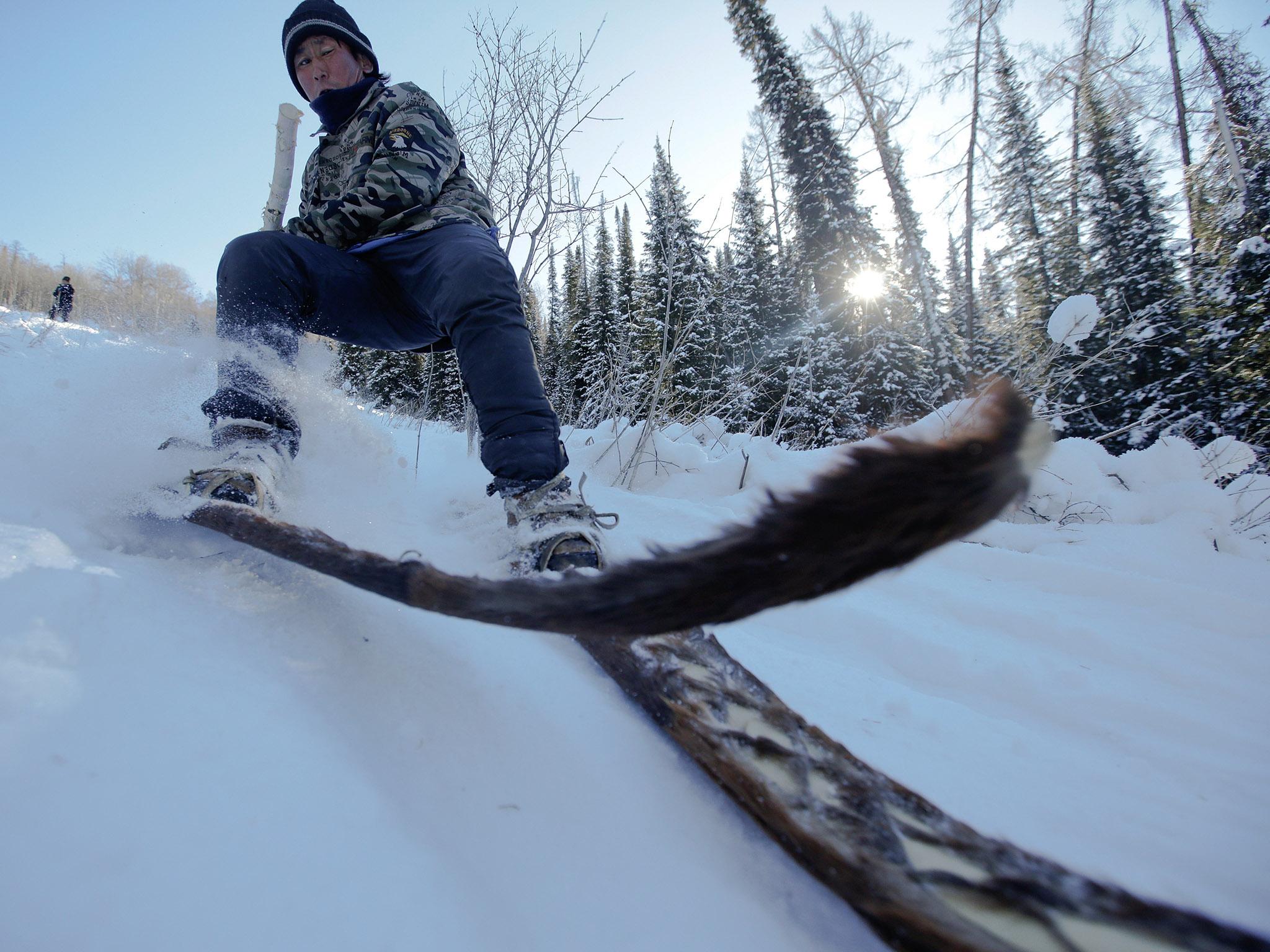Preserving skiing's origins in China's remote west
Cave paintings discovered in Altay show rows of figures standing on what look like skis, with herds of animals running below them. The following photographs show how locals are keeping the culture alive

Your support helps us to tell the story
From reproductive rights to climate change to Big Tech, The Independent is on the ground when the story is developing. Whether it's investigating the financials of Elon Musk's pro-Trump PAC or producing our latest documentary, 'The A Word', which shines a light on the American women fighting for reproductive rights, we know how important it is to parse out the facts from the messaging.
At such a critical moment in US history, we need reporters on the ground. Your donation allows us to keep sending journalists to speak to both sides of the story.
The Independent is trusted by Americans across the entire political spectrum. And unlike many other quality news outlets, we choose not to lock Americans out of our reporting and analysis with paywalls. We believe quality journalism should be available to everyone, paid for by those who can afford it.
Your support makes all the difference.In a remote village on the western edge of China, Sulita straps on his skis and heads out into a winter morning. The temperature is -30C.
For much of the year, skiing is the only way to get around Khom, a settlement of wooden cabins heated by earthen stoves, five hours’ drive from the nearest major town in the northern Altay region of Xinjiang.
The design of skis such as the ones used by Sulita, who, like many people in this region, goes by just one name, have barely changed for centuries. The bottom of the skis are covered with horse hide and shoes are tied on with leather rope. The direction of the horse fur allows the skis to slide forward, while preventing them from slipping backward when travelling uphill.
“I’ve been up the highest mountains with these,” Sulita says. “When I was young, we used the horse-hide skis a lot, for hunting or if we lost a cow or sheep.”
Xinjiang is a volatile region where hundreds of people have been killed in recent years in violence between Uighurs – a mostly Muslim people – and the ethnic majority Han Chinese, which Beijing blames on Islamist militants. Most of the violence has been in the far south of the region, rather than the north.
Cave paintings discovered in Altay – today home to a mixture of ethnic Tuvans and Kazakhs – show rows of figures standing on what look like skis, with herds of animals running below them.
Archaeologists have dated the paintings as 10,000 to 30,000 years old, according to Chinese ski historian Shan Zhaojian. That would date them as much older than archaeological findings of skiing in Russia, cited by the International Ski Federation, the sport’s governing body, as coming from 6,300 to 5,000BC.
“It’s the earliest in the world, that’s for sure,” says Shan. “I’ve got a total of 10 pieces of evidence that can prove this.”
China is keen to cash in on this historical connection. The country is set to host the 2022 Winter Olympics in Beijing and wants 300 million Chinese involved in winter sports before then. With Shan’s help, the Xinjiang Autonomous Region’s government has organised races using traditional skis and recognises skiing as a cultural heritage.
Still, the practice is slowly dying out. Forty minutes outside Altay city, the regional capital, Slanbek still makes skis, but today they are just for show.
“You can’t hunt anymore, you can’t cut down trees so there’s not much use for them,” he says, referring to official bans on both practices. Instead, much of Altay has embraced modern skiing. At the General’s Mountain resort, Mongolian folk-metal and Adele blast out over loudspeakers as children as young as five zip down the slopes.
Its abundant snow and mountains make this region one of the best places for skiing in the country, and instructors hope some of the children training here might become Olympians.
Whether the use of horse-hide skis survives will depend on the younger generation in the remote villages around Khom. As the sun peeks over the mountains and into the valleys, Namujel, 13, races his horse-hide skis against his neighbour and friend Mieergenku, 12, who is using modern skis.
There’s no competition, Mieergenku zooms past, the clear winner. But for Namujel it doesn’t matter.
“We can’t just give up on the horse-hair skis, we have to pass them on to the next generation”, he said.
© Reuters
Join our commenting forum
Join thought-provoking conversations, follow other Independent readers and see their replies
Comments